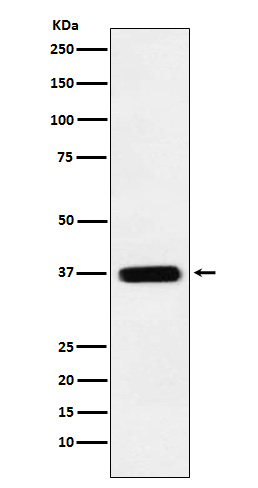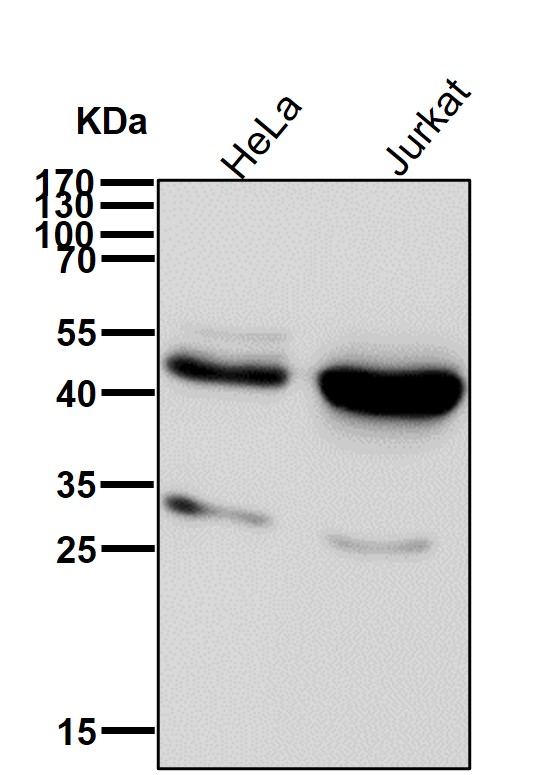


| WB | 咨询技术 | Human,Mouse,Rat |
| IF | 咨询技术 | Human,Mouse,Rat |
| IHC | 咨询技术 | Human,Mouse,Rat |
| ICC | 1/50-1/200 | Human,Mouse,Rat |
| FCM | 1/20-1/100 | Human,Mouse,Rat |
| Elisa | 咨询技术 | Human,Mouse,Rat |
| Aliases | ERIS; hMITA; hSTING; MITA; MPYS; NET23; STING; Tmem173; STING1;Stimulator of interferon genes protein;;STING |
| WB Predicted band size | Calculated MW: 42 kDa ; Observed MW: 37 kDa |
| Host/Isotype | Rabbit IgG |
| Antibody Type | Primary antibody |
| Storage | Store at 4°C short term. Aliquot and store at -20°C long term. Avoid freeze/thaw cycles. |
| Species Reactivity | Human |
| Immunogen | A synthesized peptide derived from human STING |
| Formulation | Purified antibody in PBS with 0.05% sodium azide,0.05% BSA and 50% glycerol. |
+ +
以下是3篇与TMEM173(STING)抗体相关的研究文献及其摘要概括:
---
1. **文献名称**:*STING is a direct innate immune sensor of cyclic di-GMP*
**作者**:Burdette DL et al.
**摘要**:该研究首次证实STING(由TMEM173编码)作为先天免疫的关键传感器,直接识别细菌第二信使c-di-GMP。作者通过免疫沉淀和Western blot技术,使用特异性STING抗体验证了其与c-di-GMP的相互作用,并揭示了其在激活I型干扰素通路中的作用。
---
2. **文献名称**:*Antitumor immune responses via STING activation in cancer immunotherapy*
**作者**:Woo SR et al.
**摘要**:研究探讨了STING激动剂在肿瘤微环境中激活抗肿瘤免疫的机制。通过免疫组化(IHC)和流式细胞术结合TMEM173抗体,作者发现STING激活可增强树突状细胞抗原呈递,促进CD8+ T细胞浸润,显著抑制小鼠肿瘤生长。
---
3. **文献名称**:*Activated STING in a vascular and pulmonary syndrome*
**作者**:Liu Y et al.
**摘要**:本文报道了一种由TMEM173基因功能获得性突变引起的自身炎症性疾病。研究利用STING特异性抗体进行免疫荧光染色,发现突变导致STING蛋白在内皮细胞中异常聚集,引发慢性的I型干扰素反应和血管炎症。
---
4. **文献名称**:*STING-dependent cytosolic DNA sensing pathways in autoimmune disease*
**作者**:Gall A et al.
**摘要**:该研究分析了STING通路在系统性红斑狼疮(SLE)中的作用。通过Western blot和免疫共沉淀(Co-IP)技术,作者使用TMEM173抗体证明患者外周血细胞中STING蛋白表达上调,且与干扰素特征基因的表达呈正相关。
---
这些文献涵盖了STING抗体的典型应用场景(如Western blot、免疫组化、免疫荧光),并关联了其在先天免疫、肿瘤治疗和自身免疫疾病中的机制研究。
×